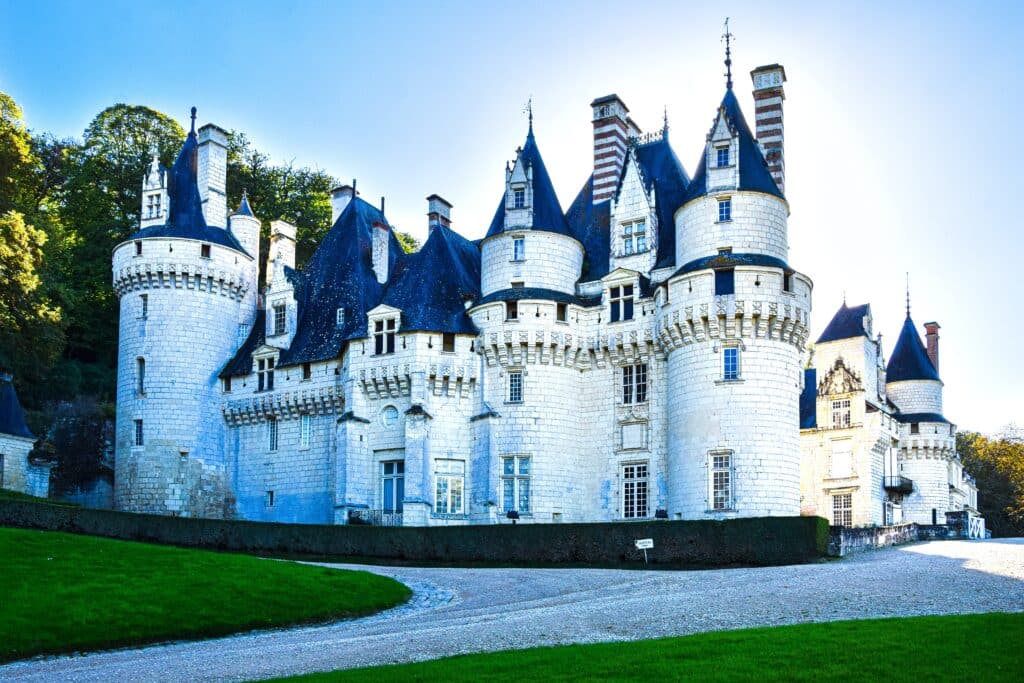1. USSÉ
Dubbed as the Sleeping Beauty castle, Château d’Ussé is one of the best examples of fairytale castles in France. Nestled on the edge of the Chinon forest and overlooking the tranquil waters of the Indre River, it served as inspiration for Charles Perrault who penned the “La Belle au Bois Dormant” (Sleeping Beauty) fairytale.
The history of Château d’Ussé dates back to the 11th century, and its walls have seen countless stories unfold. One of the most enchanting involves a young maiden named Rosemonde. Legend says she was a noblewoman betrothed to a lord she did not love. One fateful evening, as she roamed the castle’s vast corridors, she stumbled upon an old spinning wheel. Overcome with melancholy, she touched its spindle and fell into a deep slumber. It was a sleep that spanned decades, only to be broken by the passionate kiss of a wandering prince who had heard tales of the sleeping beauty of Ussé. Their love story, which began in the heart of this majestic château, has since become the stuff of fairy tales, captivating hearts and imaginations across the globe.
But the romance of Ussé doesn’t stop at legends. The castle itself, with its blend of medieval and Renaissance architecture, is a testament to the passionate endeavors of its many occupants. The Bueil family, for instance, introduced the Renaissance touches in the 15th century, seeking to marry the château’s formidable legacy with the artistic spirit of the era. Meanwhile, the terraced gardens, designed by the renowned André Le Nôtre, stand as symbols of man’s desire to harmonize with nature, offering breathtaking vistas that meld the wild beauty of the Loire Valley with the cultivated elegance of French design. To wander the grounds of Château d’Ussé is to journey through time, to be enveloped by tales of love, valor, and the undying allure of fairy tales.
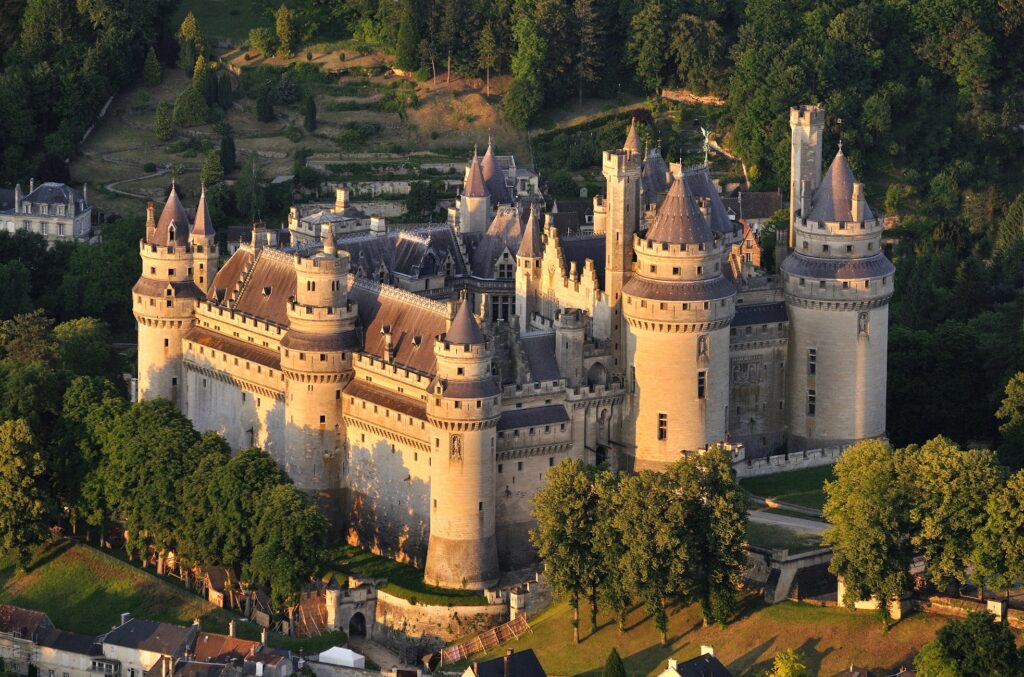
2. PIERREFONDS
In the heart of the Compiègne Forest, the formidable Château de Pierrefonds rises from the ground as if by magic: fortified and bold yet beautiful. With its origins stretching back to the 12th century, this castle has witnessed epochs of warfare, intrigue, and artistry. The castle was fortunate to experience a renaissance under the auspices of Napoleon III and the visionary architect Viollet-le-Duc. Their collaboration was not merely to restore Pierrefonds to its former glory, but to elevate it to a dreamlike emblem of chivalry and grandeur.
Legend has it that Napoleon III, inspired by a vivid dream, became personally invested in its reconstruction. In his dream, he was a valiant knight, armor gleaming under the sun, battling fierce adversaries to rescue a captivating damsel held within the castle’s stone walls. This vision, rich with passion and heroism, influenced the castle’s designs, adding to its turrets, moats, and drawbridges.
Local tales also whisper of the “Phantom Orchid,” a mysterious and ethereal flower that blooms once every century amidst the lush gardens of Pierrefonds. It emerges overnight, its petals shimmering like moonlit snow, and as quickly as it appears, it vanishes with the dawn. Many believe the orchid is a testament to a love that was once thwarted but remained unyielding, steadfast through the rolling centuries. The appearance of the orchid, they say, is an omen of an eternal love about to be rekindled. Many also claim this castle inspired the Disneyland castle
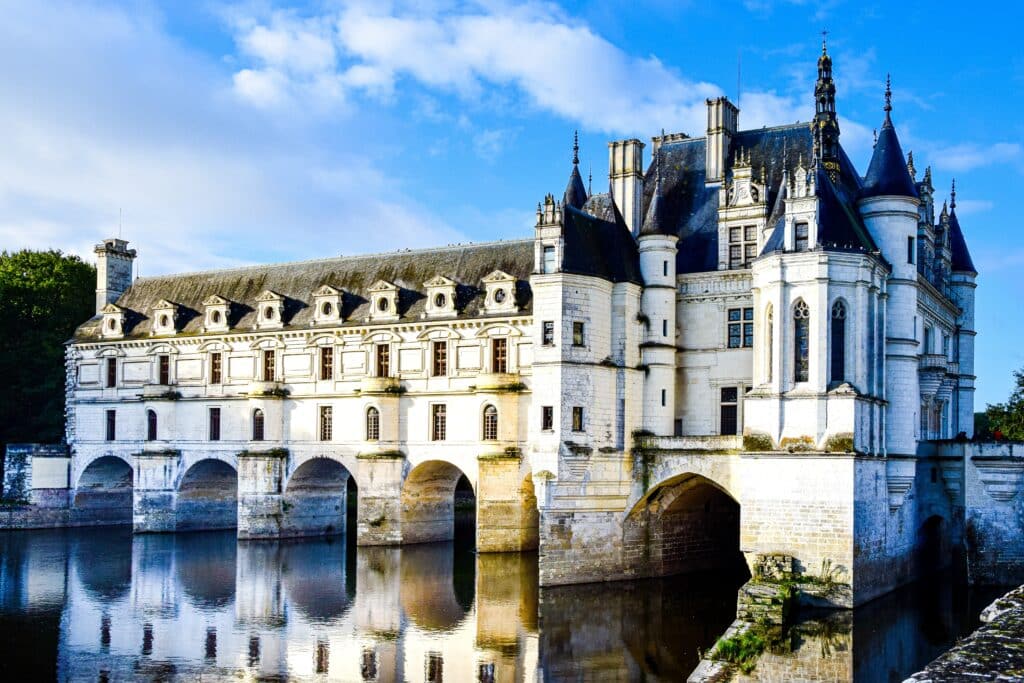
3. CHENONCEAU
Nestled gracefully over the serene River Cher, the Château de Chenonceau is not just an architectural wonder, but also a vessel of tales, intrigues, and passion. Often hailed as the “Ladies’ Castle,” its walls reverberate with stories of formidable women who shaped its destiny. Among its corridors, the saga of Diane de Poitiers and Catherine de Medici is particularly enthralling.
Diane, the captivating mistress of King Henry II and a woman of impeccable taste, initially held the château close to her heart. Under her care, Chenonceau saw flourishing gardens, reminiscent of Eden, and the iconic bridge that would later become its signature. These enhancements mirrored the ardor of the romance she shared with the King.
Yet, fortunes are fickle. Following the tragic jousting accident that claimed Henry II’s life, the castle became a bone of contention. Catherine de Medici, Henry’s widow and a formidable force in the French court, eyed Chenonceau with a mix of envy and ambition. She compelled a heartbroken Diane into a reluctant exchange, wrenching the château from her grasp. Catherine’s reign over Chenonceau was marked by grand parties and the scent of her favorite perfumes wafting through the halls, but the shadow of Diane’s presence was inescapable.
And so, the legend goes, on the still nights when the moonlight dances on the River Cher, the ethereal laughter of Diane, accompanied by the tender voice of Henry, can be discerned. Some say it’s the wind, while others believe it’s the eternal love story of two souls, forever finding their way back to the castle that was the backdrop of their romance.
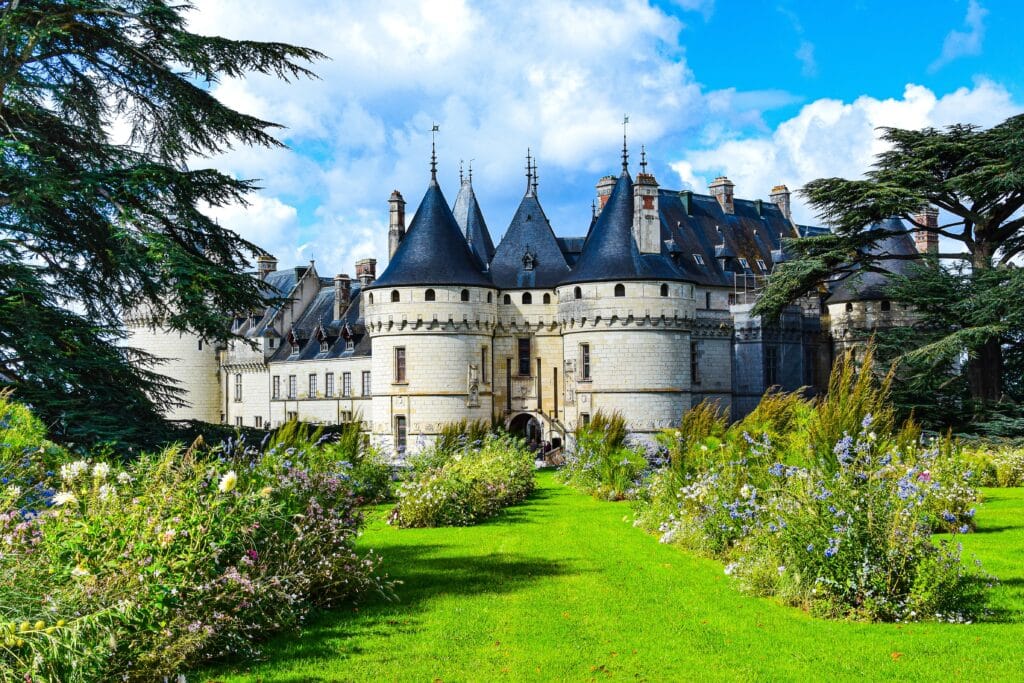
4. CHAUMONT
Nestled atop a hill overlooking the serene Loire River, Château de Chaumont-sur-Loire stands as a testament to France’s illustrious past and its eternal love affair with art and beauty. Originally built in the 10th century as a fortress, it has seen various reconstructions, each layer adding to its rich tapestry of history. The castle, with its blend of Gothic and Renaissance architectural elements, has seen many famed residents, but perhaps its most riveting chapter revolves around Catherine de Medici and Diane de Poitiers.
The two women, entwined by their mutual love for King Henry II, found their fates linked within Chaumont’s walls. After Henry’s death, Catherine bought Chaumont and cunningly exchanged it with Diane for the grander Château de Chenonceau. Diane, exiled to Chaumont, poured her heart into its gardens, leaving a legacy that’s celebrated to this day. Legend whispers that her spirit, still in mourning for her lost love, wanders these gardens, forever searching for the echoes of Henry’s laughter.
Today, beyond its captivating history, Chaumont-sur-Loire is renowned for its International Garden Festival. Artists and garden designers from around the world converge here, drawing inspiration from the château’s legends, weaving contemporary tales through floral masterpieces. As visitors meander through these gardens, the past and present seamlessly blend, reminding all of the enduring allure of Chaumont.
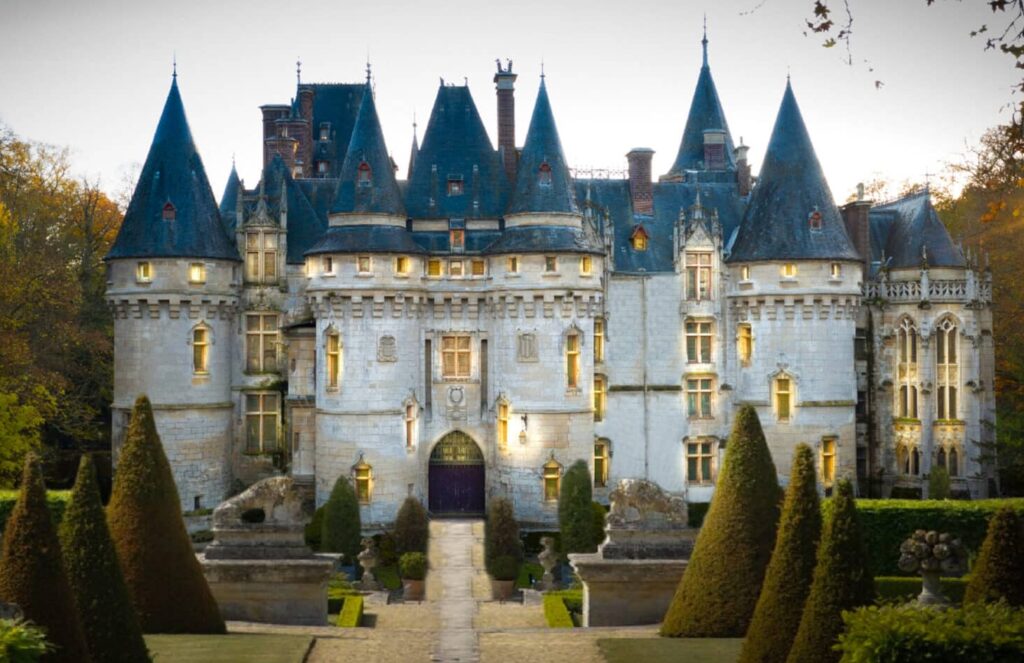
5. VIGNY
Deep within the Val-d’Oise department lies the spellbinding Château de Vigny, a renaissance masterpiece that epitomizes grandeur and splendor. Constructed in the 16th century, this castle is a harmonious blend of Medieval and Renaissance architectures, adorned with massive circular towers and a moat that silently guards its secrets. Its silhouette, reflected in its serene waters, offers an almost dreamlike vision, inspiring many tales of romance and valiant knights.
The château’s history is a medley of noble families and dramatic events. One of its most celebrated owners was the renowned marshal and war hero, Count Honoré d’Estienne d’Orves. His tenure at Vigny, filled with tales of valor, adds a layer of mystique to the castle’s chronicles. Legend has it that during a cold winter evening, he hosted a masquerade ball in the grand hall. The night was young, and the hall echoed with laughter and the soft whispers of secret lovers. As the clock struck midnight, a mysterious lady in a silver mask captivated everyone with a haunting melody. The song, so poignant and filled with melancholy, moved many to tears. As quickly as she appeared, the lady vanished, leaving behind only her melody and the shimmering mask. To this day, locals believe that the mysterious lady was a spirit from the past, reminding the guests of Vigny’s timeless charm.
Modern times have seen Château de Vigny serving various purposes, from being a grand family residence to appearing in films and music videos. It remains a beacon of French heritage, inviting visitors to traverse its halls, hoping to catch a fleeting glimpse of the lady in the silver mask or simply to immerse themselves in its rich tapestry of history and romance.
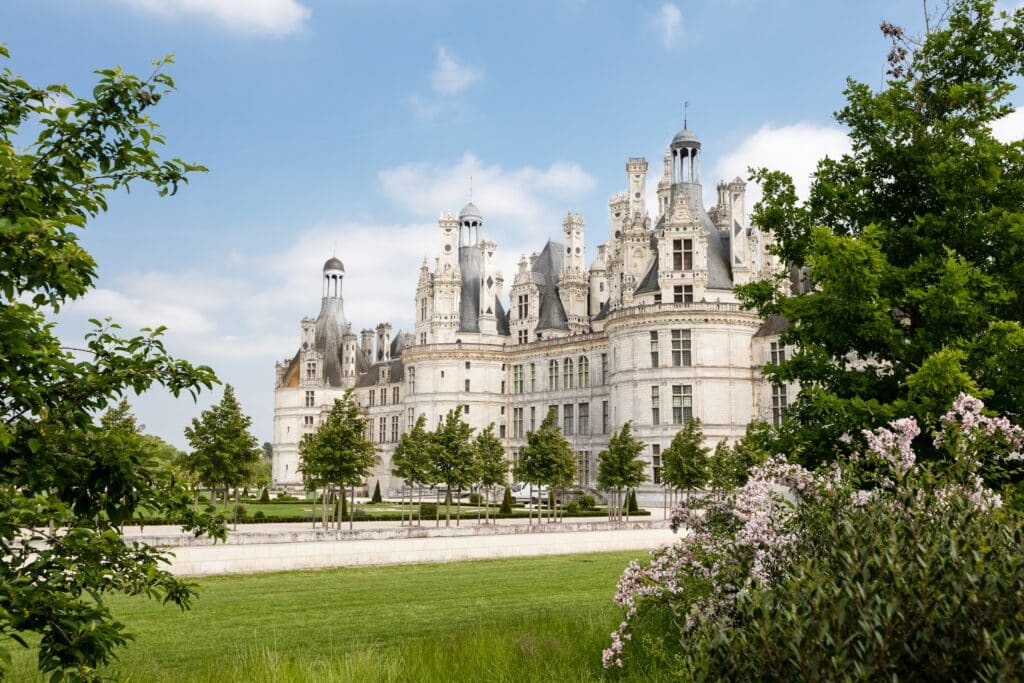
6. CHAMBORD
Majestically rising from the landscape of the Loire Valley, the Château de Chambord is a testament to the grand vision of King Francis I. With its intricate latticework, lofty towers, and a silhouette that mesmerizes every beholder, it remains one of the most recognizable castles worldwide, and even inspired Beauty and the Beast. Gabrielle-Suzanne Barbot de Villeneuve, the original author of “Beauty and the Beast,” set her story against a backdrop of grandeur and opulence reminiscent of the French aristocracy of her time. While it’s not confirmed that she directly based the Beast’s castle on Château de Chambord, the similarities between the château’s fantastical design and the imagined abode of the Beast are striking.
Crafted with the inspiration drawn from the Renaissance ideals, Chambord was never meant to be a mere fortress. Instead, it was envisioned as a hunting lodge, a place where the young king could indulge in his passions, far from the court’s watchful eyes. Its most astounding feature, the double helix staircase, is rumored to have been influenced by the genius of Leonardo da Vinci, though the veracity of such claims is debated among historians.
Yet beyond its architectural splendors, Chambord is steeped in tales of royal escapades and intrigues. Whispers in its hallowed halls tell of secret love letters, of rendezvous under the moonlit night, and of the gallant King Francis wooing his many interests amidst the lavish banquets he often hosted. One legend even suggests that within Chambord’s walls lies a hidden chamber, where King Francis stored treasures beyond imagination – gifts from mysterious Eastern monarchs and priceless artifacts from his expeditions. Though many have tried, this chamber’s secrets, if it exists, remain undiscovered.
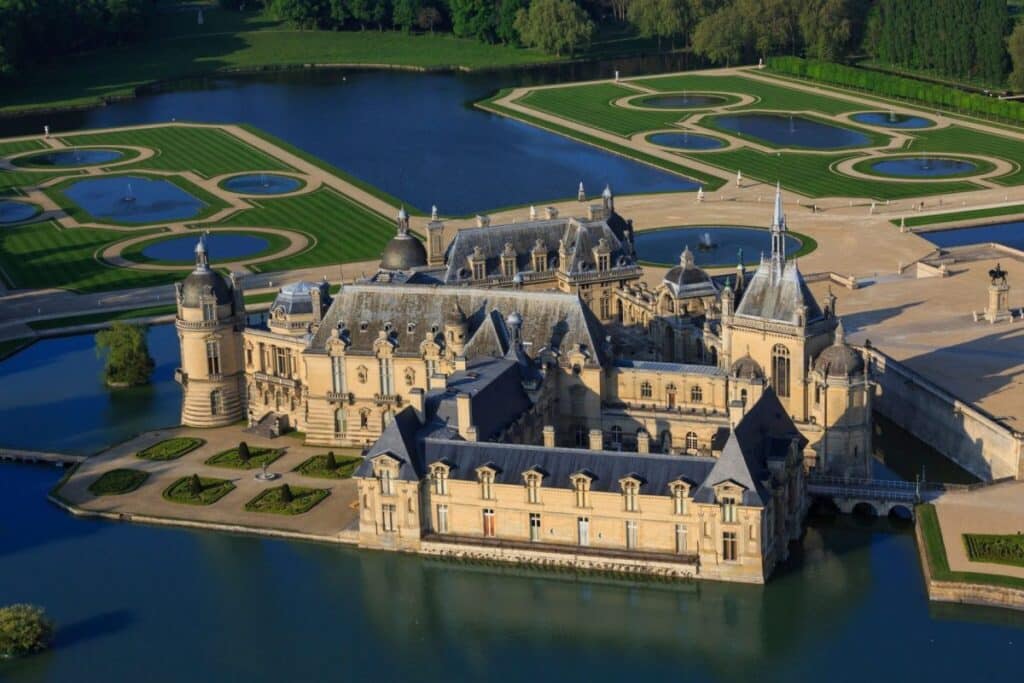
7. CHANTILLY
Situated amidst the lush forests of the Oise department (and located near Paris), the Château de Chantilly is a testament to France’s opulent Renaissance era. This castle, with its ornate façade and shimmering moats, embodies the zenith of regal sophistication. Its initial foundations date back to the medieval period, but it’s the Renaissance touches and later additions that have given it its iconic stature.
The Duke of Aumale, Henri d’Orléans, one of the wealthiest men of his time and the castle’s most illustrious owner, left an indelible mark on Chantilly. As an insatiable art collector, he bequeathed to it one of the finest collections of paintings and manuscripts in France, second only to the Louvre. His passion was so profound that legends circulate about a pact he made: in return for a unique piece of art, he’d offer any price, even if it was a magical request from an enchantress or a challenge set by a rogue knight.
But Chantilly’s tales don’t end in its hallowed halls. The castle’s gardens, designed by André Le Nôtre, the mastermind behind Versailles’ gardens, hold their own allure. Whispered legends tell of the “Moonlit Duchess,” a phantom who strolls the grounds under the full moon. It’s said she was a young maiden, deeply in love with a soldier. The two would rendezvous in the gardens, with the moon as their only witness. Tragically, her lover never returned from war. Heartbroken, she’d wander the gardens, waiting for him. To this day, many claim to see her ethereal form, still hopeful, still waiting, bathed in the soft glow of the moonlight.
Beyond its legends, Chantilly is a celebration of French culture. Hosting the world-renowned Chantilly Racecourse and the Living Horse Museum, the estate pays homage to the noble steed, an enduring symbol of French aristocracy and fairy tales alike. Visitors are often left in awe, not just by its architectural marvels, but by the rich tapestry of legends and history that Chantilly effortlessly weaves.
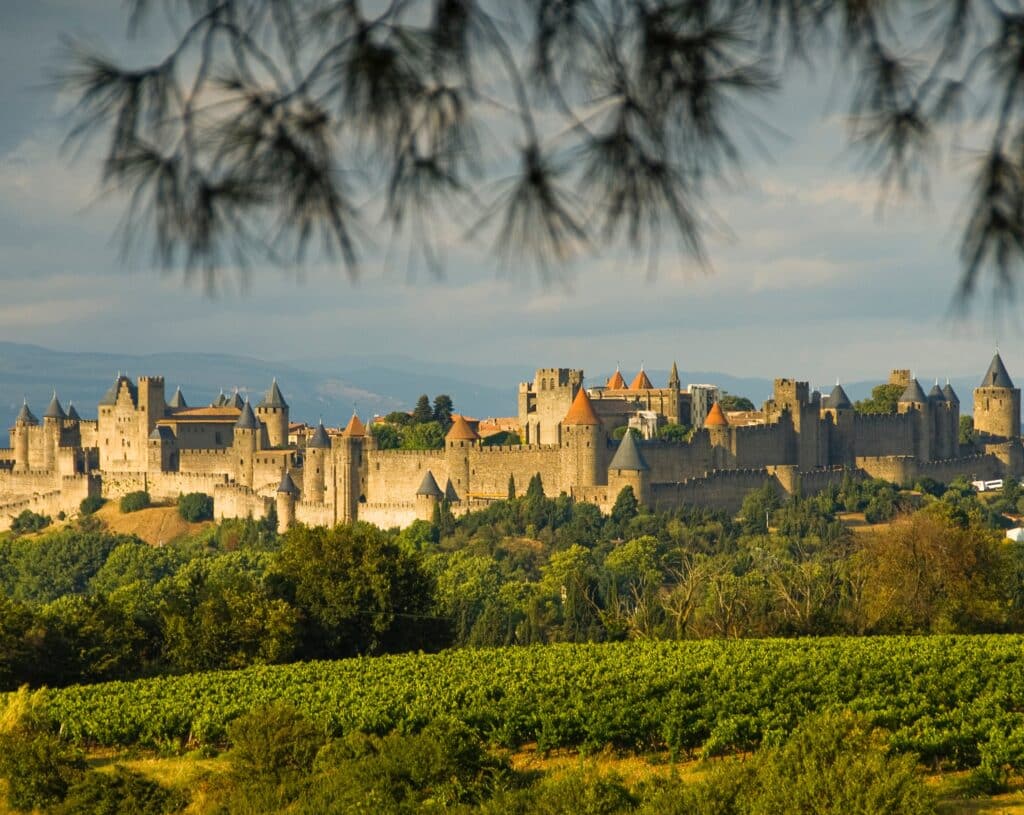
8. CARCASSONNE
Perched atop a hill and overlooking the lower plains of the Aude, the Cité de Carcassonne is a majestic stone fortress, embodying the romance and tumult of the Middle Ages. Its mighty ramparts, peppered with 52 towers, stretch over 3km, encapsulating within a rich tapestry of tales, myths, and historical episodes. This medieval fortified city is not just an architectural marvel; it’s a living chronicle of the past, where every stone seems to whisper secrets of bygone days.
The earliest origins of the Cité trace back to the Roman era, but its most defining moments emerged during the Cathar heresy in the 13th century. As the stronghold of the Cathars, a Christian dualist movement, Carcassonne became central to their resistance against the Catholic crusaders. Yet, beyond these episodes of defiance and conflict, the Cité is steeped in legends that add a mystic dimension to its imposing walls. One such tale tells of Dame Carcas, a Saracen princess. As the story goes, during a long siege by Charlemagne, food supplies began dwindling. Desperate to save her people and end the siege, Dame Carcas ingeniously fed the last remaining pig with the last sack of grain and threw it over the walls. Thinking the city still had ample provisions, Charlemagne’s army retreated. When peace bells rang out, someone remarked “Carcas sonne” (Carcas rings), thereby naming the city.
But it’s not just its storied past that makes Carcassonne a fairytale destination. The meticulous 19th-century restoration by Viollet-le-Duc brought the Cité back to its medieval splendor, making it a visual feast for anyone with a penchant for history and romance. Nightfall transforms the Cité into an ethereal realm, with golden lights illuminating its walls and the distant echoes of minstrels playing, evoking the timeless allure of chivalry and enchantment. To traverse the cobblestone streets of the Cité de Carcassonne is to step into a world where history and legend effortlessly intertwine, captivating the soul with tales of heroism, love, and the indomitable spirit of humankind.
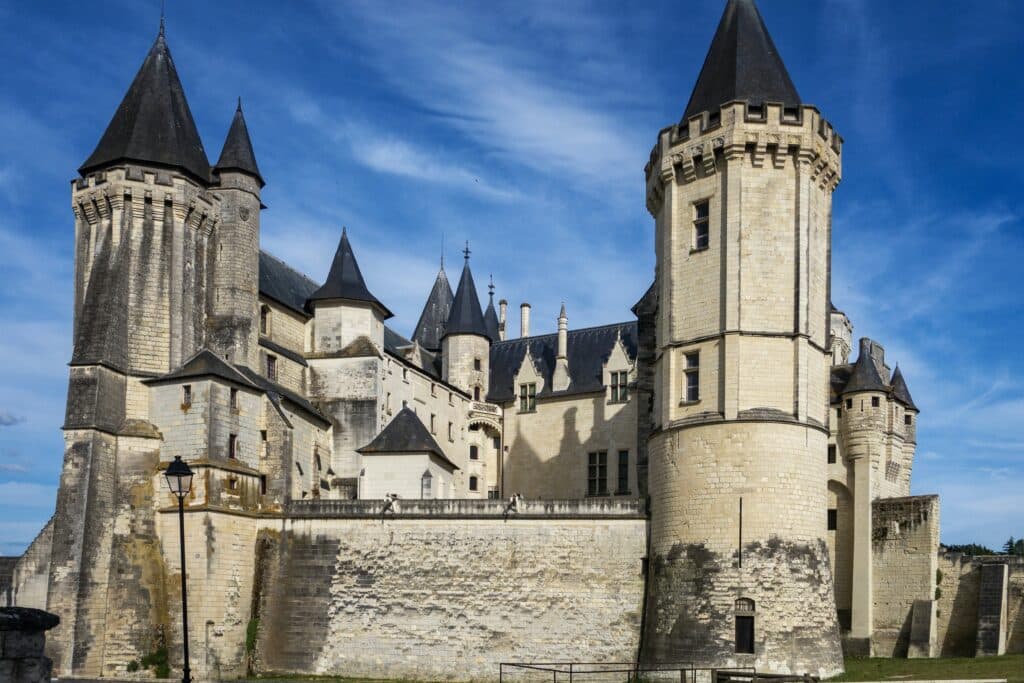
9. SAUMUR
Resting regally on the banks of the majestic River Loire, Château de Saumur emerges as a veritable gem of the Loire Valley. With its elegant turrets and refined crenelations, the château portrays the epitome of graceful medieval architecture. Its luminous white stones seem to shimmer under the sun, granting the castle an almost ethereal glow, like a radiant beacon beckoning storytellers and history enthusiasts.
The origins of Saumur trace back to the 10th century when it started as a fortified stronghold. Over the centuries, it was reshaped and refurbished, transitioning from a military fortress to an opulent palace. Yet, beyond its architectural metamorphosis, Saumur is cradled in legends and historical tales. One of the most enchanting stories associated with this castle revolves around King René of Anjou, also dubbed as “René the Good”. A Renaissance prince, he was an ardent patron of the arts, and under his reign, Saumur blossomed into a hub of culture and refinement. René was also smitten by the tales of chivalry and knighthood, and it’s said that the halls of Saumur once echoed with the lilting tunes of minstrels, celebrating the gallant tales of knights and their noble deeds.
But perhaps the most heartwarming legend associated with Saumur is that of the ‘Loyal Spirits’. According to local tales, every year on a particular moonlit night, the spirits of all the past lords and ladies of Saumur gather in the grand ballroom. They dance gracefully to the haunting melodies of a ghostly orchestra, celebrating their eternal love for the château and each other. As dawn approaches, they fade away, leaving behind a soft, magical luminescence that lingers till the first rays of the sun touch the castle walls.
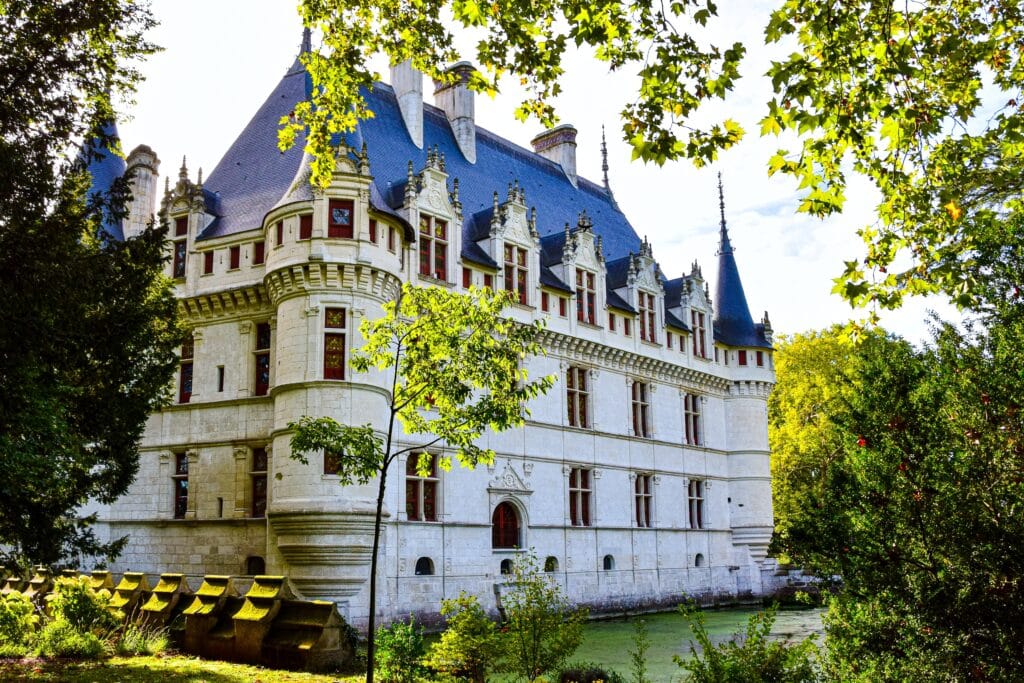
10. AZAY-LE-RIDEAU
Nestled on an isle in the midst of the gentle Indre River, the Château d’Azay-le-Rideau emerges as a dazzling jewel of the French Renaissance. A vision in water-reflected symmetry, its sculpted façade, and stately slate roofs harmoniously blend with the surrounding water and greenery, creating an enchanting tableau reminiscent of a painting. It’s often proclaimed as one of the most picturesque châteaux in all of France, a dream wrought in tuffeau stone.
The history of Azay-le-Rideau commenced in the early 16th century when Gilles Berthelot, a wealthy financier, envisioned a grand residence that would be both a symbol of his ascent in the king’s favor and a testament to the artistry of the Renaissance. While the château is an architectural marvel, it’s also steeped in a rich tapestry of legends and tales. One such story goes that Berthelot chose the site upon seeing a beautiful damsel bathe in the river, falling instantly in love with both the woman and the landscape. Their love story became the foundation upon which the castle was built.
However, like many tales, this one has its shadow. Due to political intrigues, Berthelot was forced into exile before the château’s completion, never truly witnessing the realization of his dream. Yet, it’s whispered that on certain moonlit nights, the spirit of Gilles can be seen wandering the grounds, finally at peace in the home he never got to inhabit in life. Alongside him is the ethereal silhouette of the damsel, their love eternal and undying, forever interwoven with the very fabric of Azay-le-Rideau.
Today, as visitors glide through its ornate rooms and lavish interiors, or stroll its manicured gardens, the air seems thick with tales of love, betrayal, and redemption. Azay-le-Rideau stands as a monument not just to the Renaissance’s architectural brilliance but also to the timeless tales that continue to breathe life into its ancient walls, making it a must-visit for anyone seeking a blend of history and romance.

